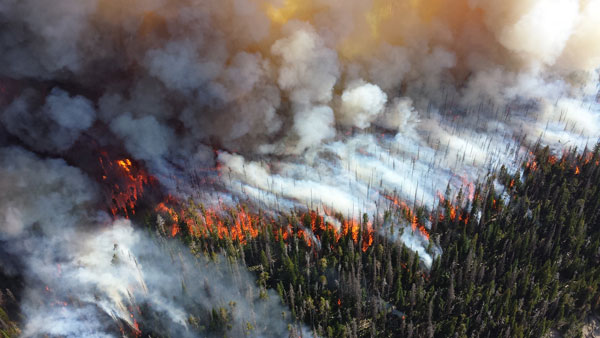Canada’s wildfire smokes reach the U.S. and Europe

[A photo of a wildfire. Photo Credit to Flickr]
Canada’s wildfires have forced the evacuation of over 26,000 people and blanketed millions of Canadians and Americans in smoke that has traveled as far as Europe.
"This wildfire season has started off more quickly, and it's stronger, and more intense," federal Emergency Management Minister Eleanor Olszewski told reporters in Ottawa.
Canada expects wildfires every summer.
However, the early start to this year’s wildfire season and the size of the ongoing fires are cause for alarm.
Canada has lost over 2 million hectares of forest, even though the nation was still recovering from the summer of 2023, when 15 million hectares of land burned.
The provinces of Saskatchewan and Manitoba have been the most severely impacted, with most of their residents now living as evacuees.
The effects of the wildfires have crossed borders as air quality has begun reaching dangerous levels in parts of the Upper Midwest and north-central U.S.
“Members of sensitive groups may experience more serious health effects,” warned the Nebraska Department of Health and Human Services.
The air pollution caused by the wildfires is especially a cause for concern as wildfire smoke is rich in carbon dioxide, water vapor, carbon monoxide, hydrocarbons, and other aerosols that may be dangerous if inhaled.
The U.S. Environmental Protection Agency’s AirNow map has denoted large parts of the U.S. Midwest as red for “unhealthy” conditions, reaching across the eastern half of Minnesota into western Wisconsin and northern Iowa.
AirNow considers much of the U.S. Midwest as having hazardous conditions where everyone is more likely to be affected due to severe ground-level pollution.
Precautions from various governmental agencies are being closely followed as hospitals report an increase in patients with respiratory symptoms.
Pulmonologist Dr. Rachel Strykowski told the AP News that fine particulate matter from wildfire smoke may aggravate a patient’s underlying condition due to the inflammation of the airways.
The smoke has reached as far as Europe, causing visible hazy skies but is not expected to affect ground-level air quality.
Huge plumes of smoke have been large enough to catch jet streams and be carried into the atmosphere above Europe.
According to the Copernicus Atmosphere Monitoring Service (CAMS), due to the very high altitudes, there are no immediate health risks to residents in Europe.
This year’s Canadian wildfires have been attributed to accelerated surface drying brought on by a “significant reduction in snowpack in the spring,” explained University of Ottawa professor Hossein Bonakdari.
During the ongoing wildfires, evacuation efforts are underway as emergency centers have opened in Manitoba, as well as in Winnipeg where public buildings have opened for evacuees as the city’s hotels are already filled with fire refugees.
Grand Chief Kyra Wilson of the Assembly of Manitoba Chiefs stated at a news conference, “It’s really sad to see our children having to sleep on floors. People are sitting, waiting in hallways, waiting outside, and right now we just need people to come together. People are tired.”
Canada’s wildfire season is expected to last until September as the entire North American continent witnesses the worst wildfire season since 2023.
Elsewhere, forest fires have been raging in Russia’s Far Eastern Federal District since early April.
Combined with Canada’s fires, these blazes have generated over 35 million tons of carbon emissions, according to CAMS.

- Joonpyo Kim / Grade 12
- Haven Christian School

![THE HERALD STUDENT REPORTERS [US]](/assets/images/logo_student_us.png)
![THE HERALD STUDENT REPORTERS [Canada]](/assets/images/logo_student_ca.png)
